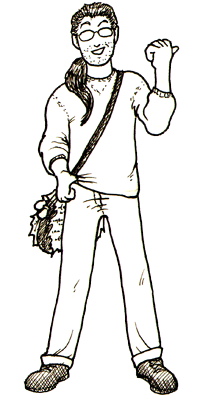| Area(s) Reported: Africa, Zulu Territories
Date(s) Reported: 1868 CE (first printed reports)
In 1868, Henry Callaway published a book of Zulu tales from Africa; and that book is where the first -- and only -- account of the Abatwa was printed. The Abatwa were said to look like human males, but be as small as fleas. They had no home, only following their need to hunt. They hid under grass, slept in anthills, and only gathered together to hunt or eat. When an Umutwa (the proper name for a single Abatwa) killed an animal with his poison arrows, the beast was then eaten, bones and all, leaving no trace of it behind. If there was no prey left in the area, the Abatwa rode to find more by sitting single-file on a horse’s back, in a line from its neck to its tail... and if they didn’t find prey, they ate the horse! Abatwa hated being small, and reminding them of their size could prompt them to attack. Their tiny poisoned arrows caused uncontrollable bleeding in victims, and could kill an animal -- or a human -- in a matter of moments. So it became a tradition that, if an Umutwa was encountered, to greet the tiny being by announcing: “I saw you!” When the Umutwa then asked from where it had first been seen, they would be told they were seen from the top of a distant mountain, thus implying a great size to them. In his book, Callaway also mentions that an actual tribe of short people (averaging four feet in height) lived near the Zulus, and were also called the "Abatwa"; so the tales of the flea-sized Abatwa were likely based on the Zulus’ first encounters with their short neighbors. Of course, it's also possible that the Zulus' neighbors were named after the monsters... | |







